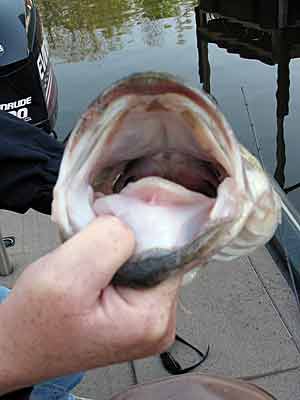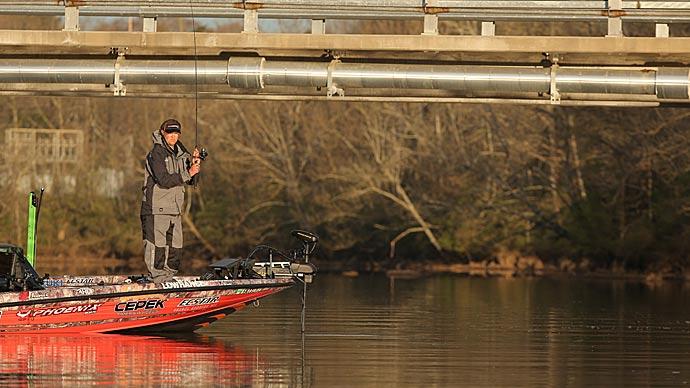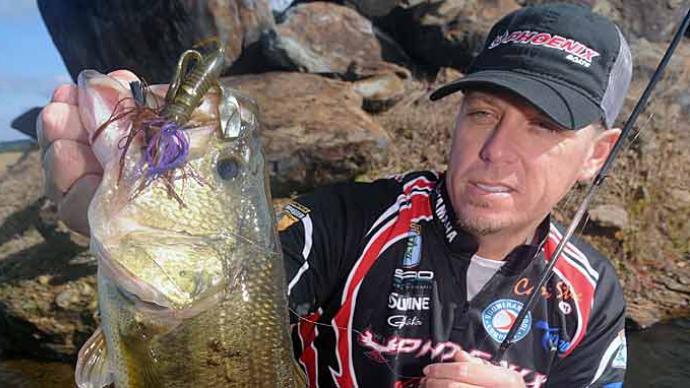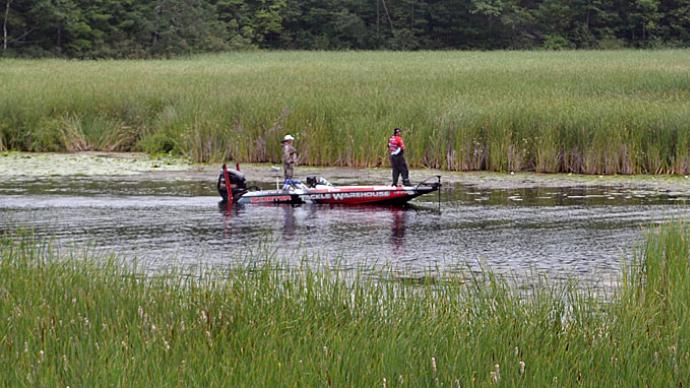
Spring makes for some pretty exciting fishing because most fish are shallow, and you can anticipate strikes as your lure swims into the visible cover.
However, you can’t go down the bank casting wildly at every log or bush and catch many fish. You may catch a few, but you’re cheating yourself out of the fantastic day you may have had by being more specific with your lure presentations.
Successful “target” fishing involves more than being accurate with a lure and a fishing rod. You must select the lure that offers the proper presentation, position the boat to have the best angle to make a successful cast, and then get the lure in there without spooking the fish – an essential consideration in early spring when bass can be edgy.
Stained water helps. Once I’ve established that bass are shallow, I first concentrate on those areas where the water is less clear. Off-color water lets me get closer to the fish without spooking them and provides more margin for error. Fewer things can go wrong when you’re making shorter casts, plus you can cover the water much faster.
The first cast is always the most important, so make it count. You stand a better chance of making a bass strike out of impulse if you get the lure as close to it as possible. If your first cast bangs into the bush or crashes into the water off-target, you’ve warned the fish of your presence.
That’s why it’s essential to put the boat in the best possible position before making that cast. Take the time to assess the target and choose the angle that provides a more natural presentation that won’t spook the fish. There may be two or more bass-holding spots on a bush or log, so make multiple casts from different angles and treat each one with the same importance.
Flipping and pitching are my favorite techniques because I can place a jig or worm gently into a tight area and allow it to fall naturally without spooking the fish. Given a choice, I prefer to flip because it gives me more control over where the lure lands and its rate of fall. However, if the water is clear, you may need to back off and pitch the lure to the target.
I also like big baits for flipping because I can control their descent better. Although a fast-falling lure will trigger more impulse strikes, there are times when bass want it slower. I can control the fall by holding the rod tip higher and letting the lure slide over a limb. A lighter lure would slow it down, but I lose control over its fall rate.
You’ve got to be flexible, too. It’s not unusual for bass to hold near the bottom of buckbrush during the morning hours and then be suspended in the tops of the same bush later in the day. When bass are suspended in bushes, they’re more wary, so you must cast beyond them and sneak the bait into the bush to draw that impulsive strike. That calls for a lure that runs horizontally and stays in the strike zone longer, such as a spinnerbait or a soft-plastic stick bait. If you notice that the morning jig bite has stopped or that bass are beginning to spook out of the bushes before you get near them, it’s time to back away from the targets and use those horizontal lure presentations.
Remember: A lot of big bass prowl the spring shallows. If you’re patient, choose the lure that affords you the best presentation and make each cast count; you’ll catch more fish.
For more articles, quick tips, and much more, visit HankParker.com.




